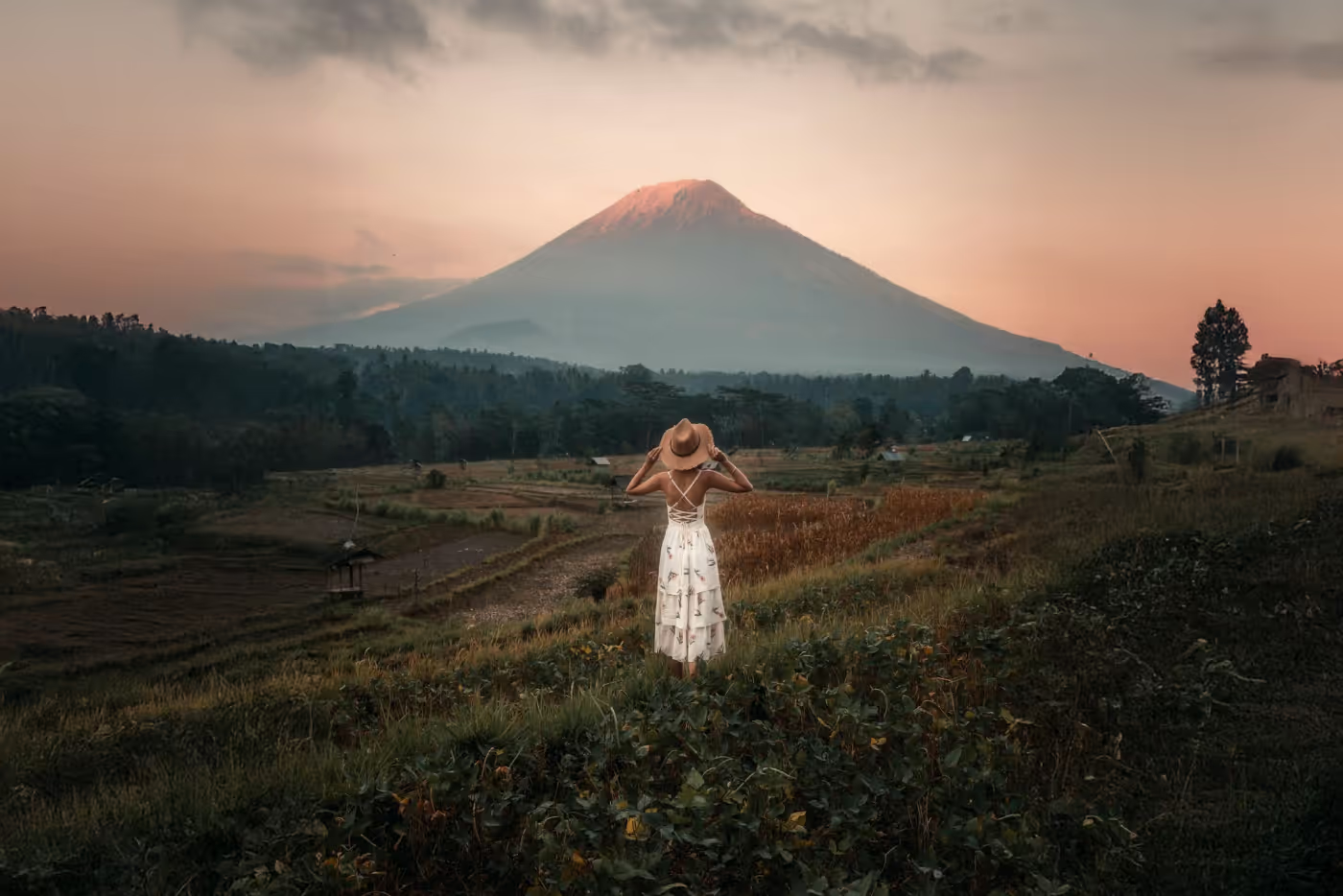While Instagram influencers crowd the famous Tegalalang lookout, a more authentic experience awaits those willing to rise before dawn. These five walking routes follow the ancient subak irrigation paths used by rice farmers for centuries, offering intimate encounters with Bali's agricultural communities as they begin their daily rituals. From mist-shrouded valleys to hillside villages, these trails reveal how the island's iconic landscapes remain very much alive and working.

Jatiluwih Heritage Track
This UNESCO-protected landscape represents the epitome of Bali's subak irrigation system, and this dawn walk follows the actual channels that distribute water through the terraces. Starting from the upper village of Gunung Sari, the path descends through layers of emerald terraces, passing small shrines where farmers make their morning offerings to Dewi Sri, the rice goddess.
What makes this walk special is the timing - arriving before sunrise lets you witness the entire valley coming to life. Water priests check the bamboo gates controlling water flow, farmers begin their daily tasks, and dozens of species of birds emerge to feed among the paddies. The morning light creates ever-changing patterns across the rhythmic layers of terraces.

Sidemen Valley Circuit
This circular route explores the less-visited rice terraces of East Bali, where traditional farming methods remain unchanged for centuries. The trail connects four small villages, each specializing in different aspects of traditional agriculture - from rice farming to coffee growing and spice cultivation.
What sets this walk apart is its diversity - you'll pass through rice fields at different stages of growth, spice gardens, coffee plantations, and small forests of flowering trees maintained for temple offerings. The backdrop of Mount Agung adds drama to every view, while the morning mist creates an ethereal atmosphere in the valleys.

Muntigunung Rice Route
In the arid highlands of North Bali, this remarkable trail reveals how communities have carved terraces into seemingly impossible terrain. The path follows an ancient waterway that transformed this once-barren landscape into productive agricultural land, passing through villages that still maintain millennium-old farming traditions.
The walk offers stunning views across the north coast and reveals innovative traditional farming techniques adapted to the dry climate. You'll see how farmers use sophisticated intercropping methods and traditional weather prediction to maximize their yields in this challenging environment.

Belimbing Valley Path
This gentle walk explores some of Bali's oldest terraces, where the same families have been farming the same plots for countless generations. The path follows the contours of a hidden valley, connecting ancient family compounds to their ancestral rice fields through a network of unique covered walkways.
What makes this trail special is its insight into the social organization of traditional farming communities. You'll see how extended family compounds connect directly to their fields through secret paths, and how the community works together to maintain the complex irrigation system.

Bunutan Sunrise Trail
This dramatic ridge-top walk offers views of rice terraces cascading down both sides of a narrow peninsula. The trail follows the spine of the ridge, revealing how farmers have maximized every possible inch of cultivatable land, creating a stunning symmetry of terraces descending to the sea on both sides.
The path connects three traditional villages, each with its own unique farming traditions and irrigation methods. The morning light creates spectacular shadows across the terraces, while traditional duck herders guide their flocks through harvested fields, maintaining age-old pest control methods.









